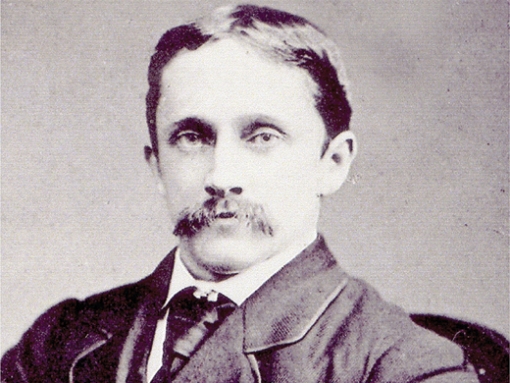Books: Review - Jack the Ripper: British Intelligence Agent by Tom Slemen

A new book claims an assassin was behind the macabre East End killings of 1888 – and they were covered up by the capital’s police chief
Published: 10 June, 2010
by GERALD ISAAMAN
MORE nonsense has been written about Jack the Ripper than perhaps any other callous murderer in history.
It is more than a century since he haunted the doomed streets of London’s East End, in 1888, and tore apart five prostitutes in a manner that has appalled anyone delving into his horrific crimes.
The trouble is that he was never caught. And since those dark days there have been theories identifying the Ripper as Sir William Gull, Queen Victoria’s personal physician. This was the subject of the late Stephen Knight’s The Final Solution, published in 1978, a strange concoction based entirely on successive chapters of speculation that were, almost miraculously, turned into fact by the time he reached his conclusion.
That, in turn, was based on the evidence of an old man named Joseph Sickert, who claimed to be the artist son of the famed Walter Sickert, who repeated stories told to him in his youth.
I went to see Joseph at his Hampstead home, and found him in a studio with a dusty old painting on an easel, alongside a pot of totally dry brushes, and unable to articulate the story with any conviction whatsoever.
Indeed, he later admitted he had made it all up.
Then there was the more recent declaration by the admired American thriller writer Patricia Cornwell that it was the painter Sickert himself who was the Ripper. She produced dodgy DNA evidence from a Sickert painting to give us the illusive proof, yet, remarkably, ignored the fact that Sickert was in France on one vital occasion.
But don’t forget that Sickert did paint two versions of the grisly Camden Town Murder, showing a dead corpse on a bed, one of which used to hang in the studio of the late artist Fred Uhlman in Downshire Hill, Hampstead.
The above are but two of a cascade of books that have pointed the accusing finger at a range of colourful figures, among them, unbelievably, Prince Albert, William Gladstone, and barrister Montague Druitt, all of whom are unable to shout from the grave that they are: “Not Guilty, m’lud.”
Now comes a new identification of the Ripper as Colonel Claude Reignier Conder, presently buried in a Cheltenham cemetery. He was a British intelligence officer and allegedly a trained assassin, who, it is now claimed, slaughtered the girls because they had links with Irish terrorists, among other things.
It is indeed an intriguing though equally odd tale that is well-presented without hysteria, and has a truly bizarre ring of some truth about it, depending what mood you are in or how gullible you are.
Author Tom Slemen, with the help of criminologist Keith Andrews, relies on a chalk message scrawled on the wall near the spot where Catherine Eddowes was murdered, which said: “The Juwes (sic) are the men that will not be blamed for nothing.”
He reveals that Sir Charles Warren, the Met police commissioner and a personal friend of Colonel Conder, ordered the graffiti to be scrubbed out. But poor Catherine also had strange “symbols” carved into her face, which Slemen identifies as coming from the ancient language of Moabite.
There is, of course, much more to it than that, both Colonel Conder and Sir Charles having been archaeologists who excavated scores of sites in the Middle East, among them the remains of King Solomon’s Temple in Jerusalem. And it was rings from the temple that prostitute Annie Chapman, another Ripper victim, stole from Conder’s house.
Had enough? Well, Slemen suggests that Sir Charles knew it was his old school friend from Cheltenham who carried out the Ripper murders – Conder was indeed suspected – but he cleverly covered it up, dying in 1927 without revealing the truth. It was a conspiracy, insist the authors, by the monarchy and government of the day that saved a loyal soldier from being unmasked.
In a violent world it is, alas, true that people are attracted to violent crimes and stories, especially where the unknown allows the imagination to play games.
Where would the TV and film industry be without them?
Most notorious killers have been identified without doubt, whereas we shall never know the answer to the tantalising mystery of the identity of Jack the Ripper. And you can say Amen after that.
• With Keith Andrews. Bluecoat Press, £8.99



